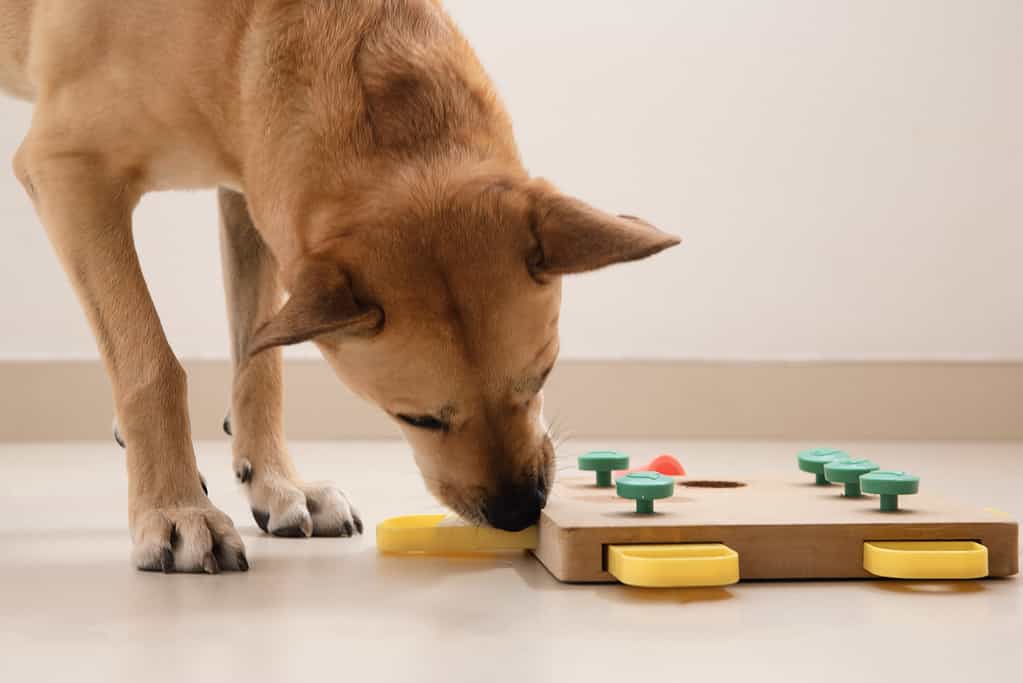
Dogs with consistent training may prove smarter than other dogs of their breed.
©Lenti Hill/iStock via Getty Images
Dogs are among the most popular companion animals because of their intelligence. The current theory states that dogs have an average intelligence of a two-year-old child. The smartest dog breeds in the world are border collies, poodles, and German shepherds because they are capable of learning and doing important jobs like herding, therapy, or police work.
However, not all dogs are intellectually capable of handling big jobs like providing emotional support. The least intelligent dogs may not be the brightest bulbs, but they shine just fine regardless.
Dog Intelligence
Before getting started, understand that the following least intelligent dog breeds are not dumb in the traditional sense. A dog may score high in one category, but lower in another. The three categories that measure dog intelligence are:
- Obedience intelligence measures the dog’s ability to listen, comprehend, and execute commands successfully and quickly. The faster the dog learns and performs successful commands, the higher their intelligence score.
- Adaptive intelligence measures the dog’s ability to identify problems and provide solutions, while adapting to a situation. A common test is hiding a treat under a blanket and seeing if the dog can identify where the treat is and how to get it.
- Instinctive intelligence measures the dog’s ability to perform acts they are bred for. For example, how capable is a guard dog at guarding something without explicit training?
Afghan Hound
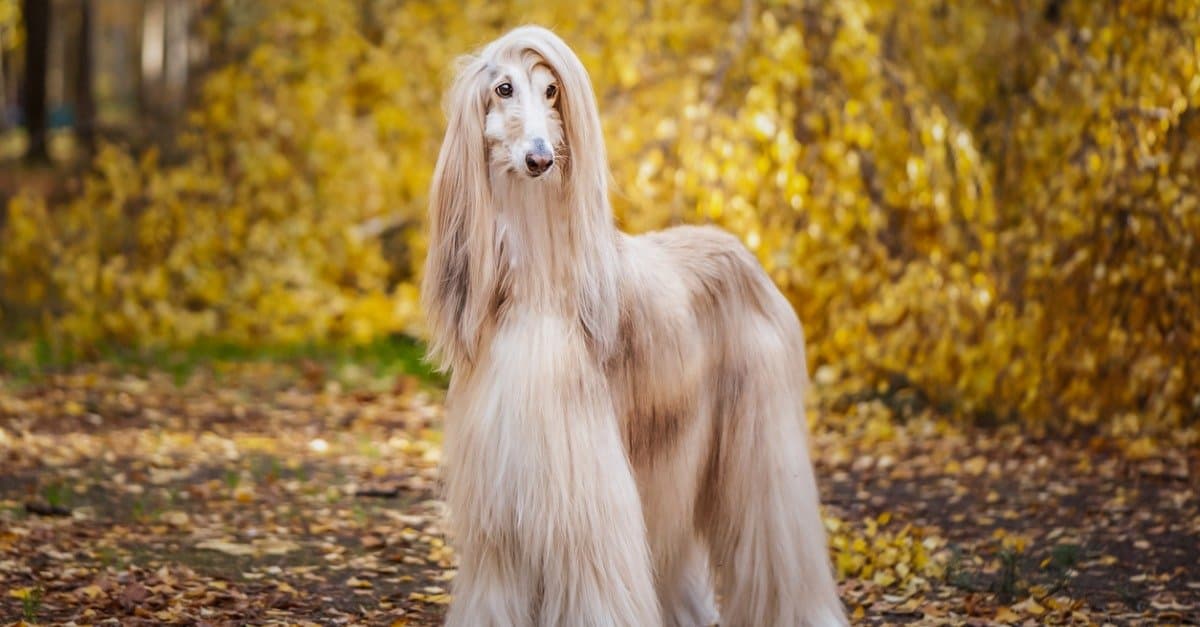
The Afghan hound is prized for their long and silky coats rather than performing tricks.
©WildStrawberry/Shutterstock.com
Afghans are a type of sighthound, bred with keen eyesight to spot and race after prey. Their long and slender bodies keep them cool in the Afghanistan heat while increasing their speed.
Afghan hounds are highly independent dog breeds. They enjoy spending time with family members but can be shy around strangers and children. It will take time for an Afghan to become familiar with new people, and they must be introduced to other dogs at a young age.
These dogs can be difficult to train. Overall, Afghan hounds have moderate instinctive intelligence, but low adaptive and obedience intelligence. They are a breed that requires a lot of patience to work with.
Basenji

Despite having excellent instinctual intelligence, Basenjis have a low intelligence score.
©Verbitskaya Juliya/Shutterstock.com
Basenjis are a hunting dog breed with a strong desire to hunt and catch prey. These dogs were bred for hunting small animals like rodents in the African savannahs. They have strong senses, short coats, and possess a lot of energy to quickly catch fast-moving prey.
However, Basenjis are highly independent thinkers. They’re more interested in teaching their owners how to hunt than learning how to perform tricks and commands.
Overall, Basenji’s have high instinctive intelligence, but low obedience and adaptive intelligence. They can make for nice family dogs, but they are incredibly stubborn.
Bulldogs
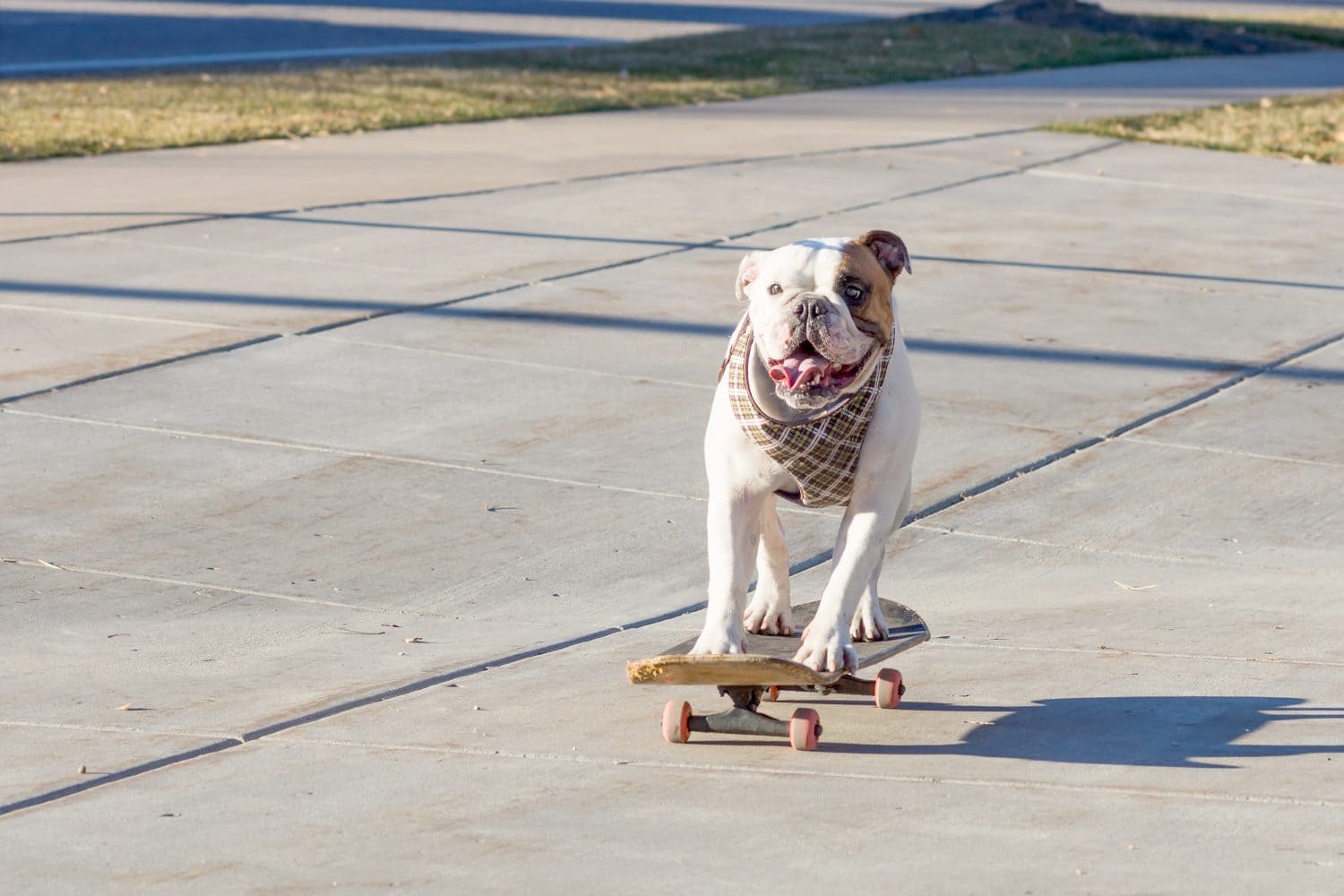
Bulldogs can learn unique skills and tricks, making them popular social media dogs.
©IrinaK/Shutterstock.com
The bulldog has gone through a dramatic adaptive shift in their biology. Originally, bulldogs were bred to fight bulls, hence the name. When bullfighting was outlawed, breeders and bulldog enthusiasts modified the breed to have more aesthetically pleasing qualities (shorter face, stubby tail, wider bodies).
Unfortunately, these traits negatively affect the breed. Bulldogs have limited mental activity. They can be taught common tricks, as well as sports like skateboarding and surfing, but it takes a long time with consistent patience for results. They have poor intelligence in all three categories.
Chow Chow
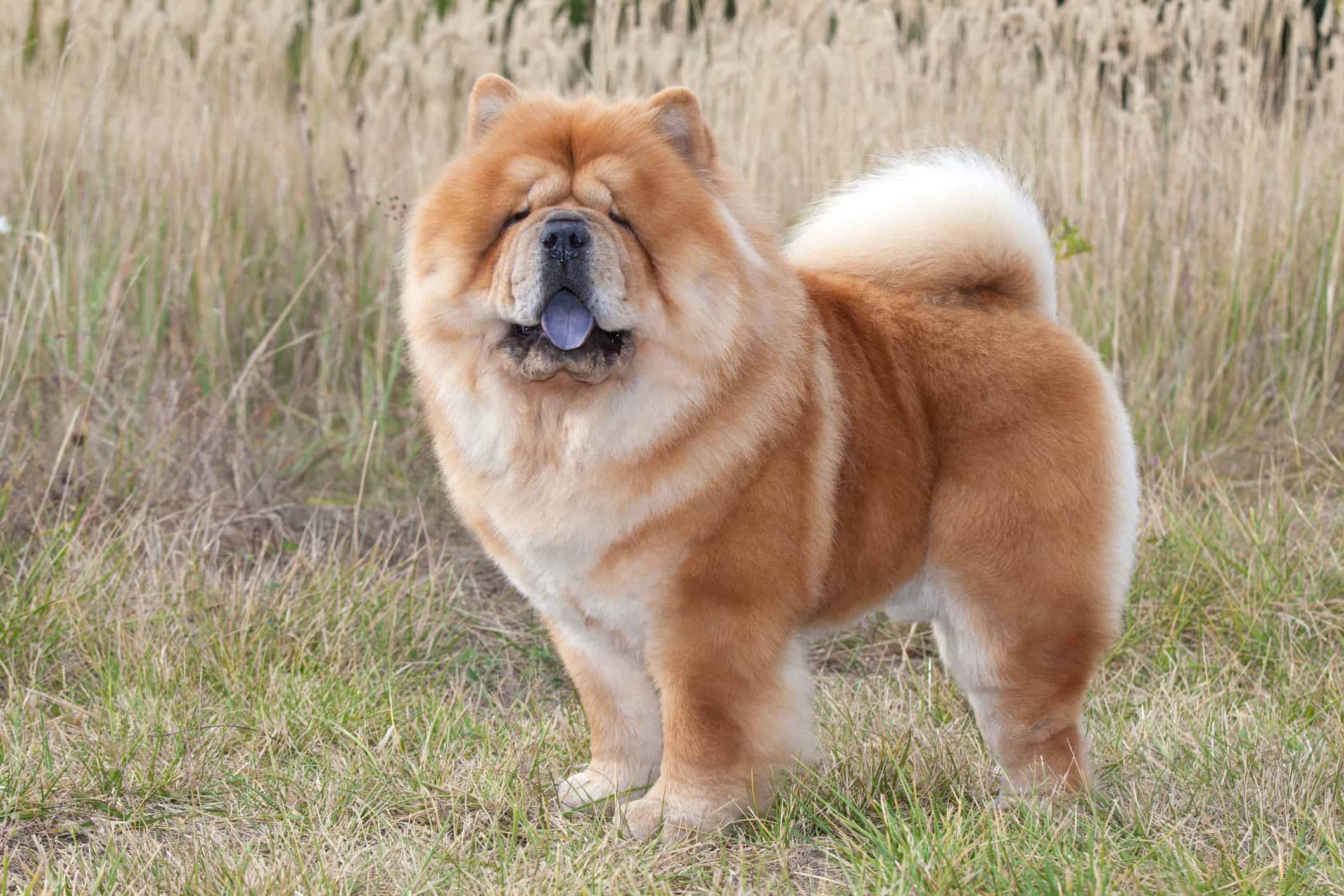
These Chinese guard dogs have strong bodies and stubborn personalities.
©VKarlov/iStock via Getty Images
Chow chows are a medium-sized guard dog from China. They are an ancient breed, dating back thousands of years. Traditionally, chow chows are guard dogs, but they can also serve as hunting and sled dogs.
The chow chow is extremely willful and may challenge owners whom they find submissive. This behavior makes it difficult for non-dominant owners to train them properly. Chow chows are not typically aggressive, but they can unintentionally pose harm to people who cannot control them (they can weigh 50-75 pounds).
Training chow chows should begin as soon as possible. Owners must socialize the breed often and have a strong, dominant personality so the dog will obey commands.
Overall, chow chows are difficult to train, very stubborn, and independent. However, they have strong instincts to protect their family and home. This shows chow chows have moderate to high instinct intelligence, but low obedience and adaptive intelligence.
Borzoi
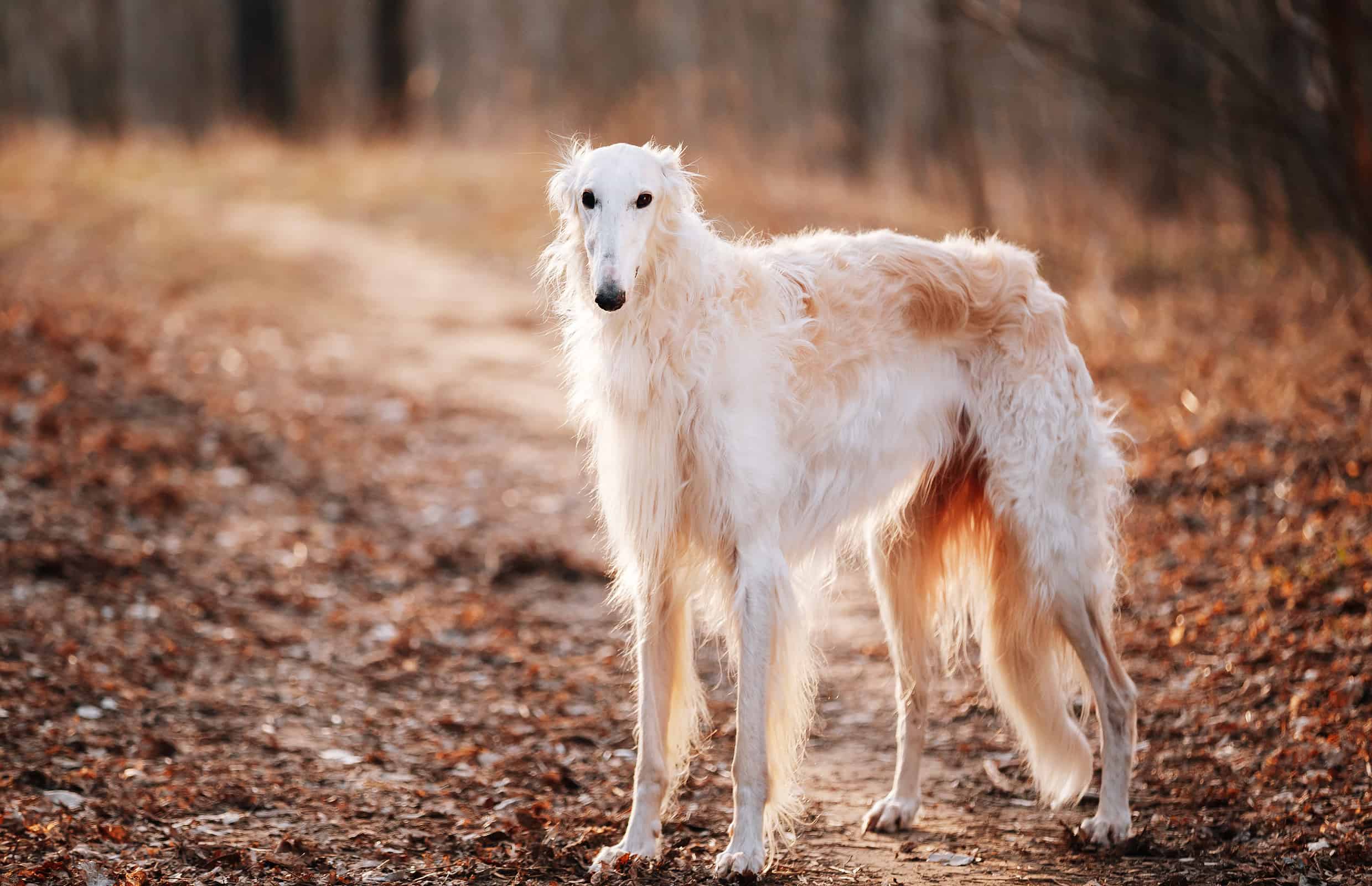
Borzois have great instinctual intelligence and perform well at lure coursing.
©bruev/iStock via Getty Images
The Borzoi is a tall and slender dog with the moniker “Russian wolfhound,” because they were bred to spot and hunt wolves. They are equally capable of hunting rodents, foxes, and boars, thanks to their impressive eyesight and incredible speed.
Domestic Borzois are quite independent and persistent. They are difficult to train because they have strong hunting instincts to spot and catch prey. Still, they are calm and passive dogs, wanting little more than to spend time with their family. Unfortunately, their size means they have short lifespans.
Borzois possess great instinct intelligence, but poor obedience and adaptive intelligence.
Bloodhound
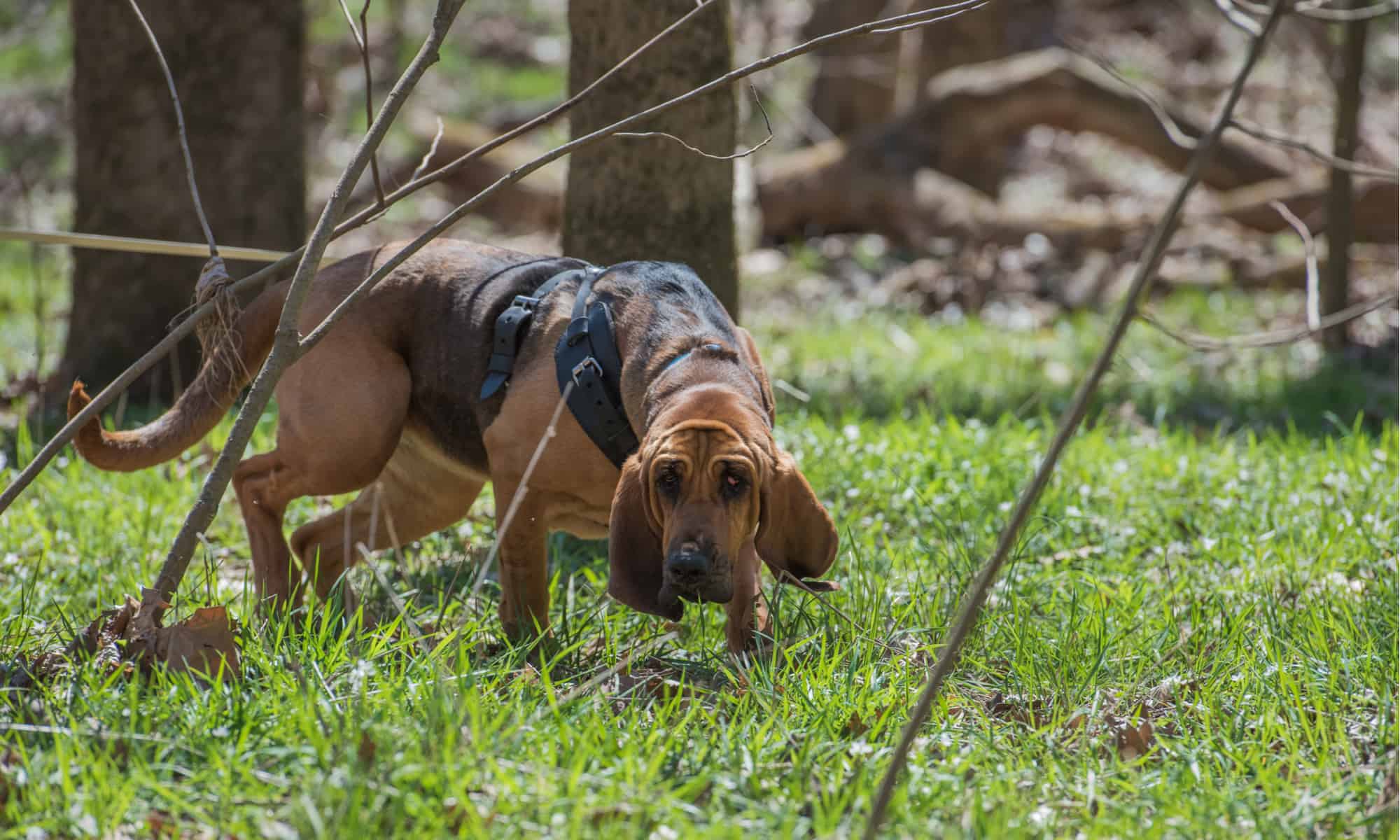
Before modern security systems, bloodhounds were the top dog for finding escaped convicts.
©NSC Photography/Shutterstock.com
Bloodhounds are scent hounds that were bred for tracking and hunting small prey. They have an incredibly strong sense of smell and long ears to help old scents for better tracking. A bloodhound’s nose is approximately 1,000 times stronger than a human’s nose. Many bloodhounds are used for search and rescue operations.
These dogs have excellent instinct intelligence but can be lazy with obedience training. They are capable of learning basic tricks and commands but perform better with smell-based tricks. Essentially, bloodhounds are better at identifying problems than finding solutions.
Pekingese
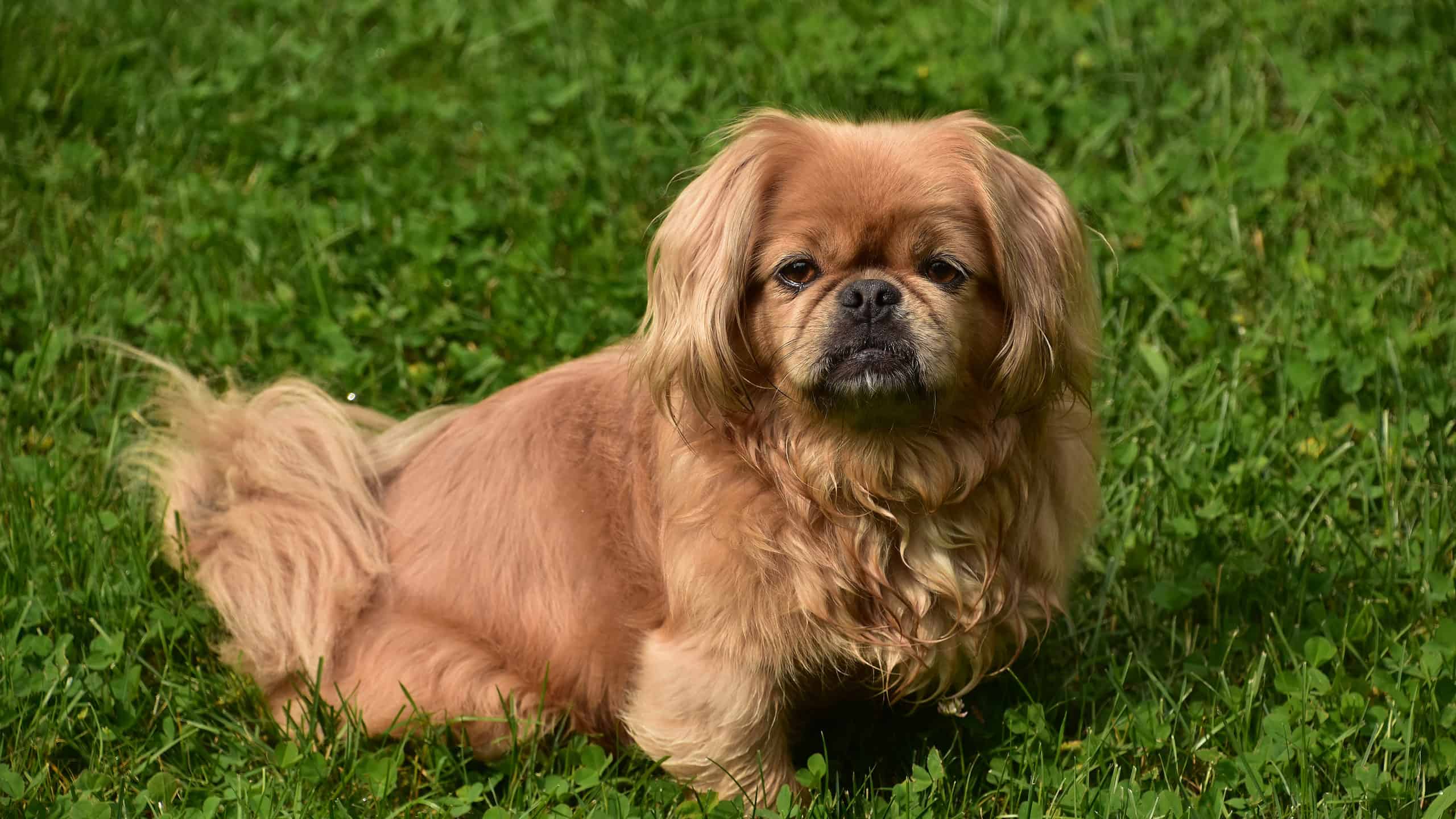
The Pekingese can learn basic commands and tricks with consistent training.
©DejaVuDesigns/Shutterstock.com
The Pekingese is a small-breed dog from China bred for companionship. Wealthy women wore long dresses with large sleeves where the breed would comfortably rest while they traveled.
Pekingese dogs are bred for companionship and comfort, so many pet parents neglect their training in favor of snuggling. The breed is capable of learning commands well, but they can be stubborn and may take a little extra time to train.
They have a moderate to average level of overall instinct, obedience, and adaptive intelligence, but their stubborn personalities put them on most lists for least intelligent dog breeds.
Beagles
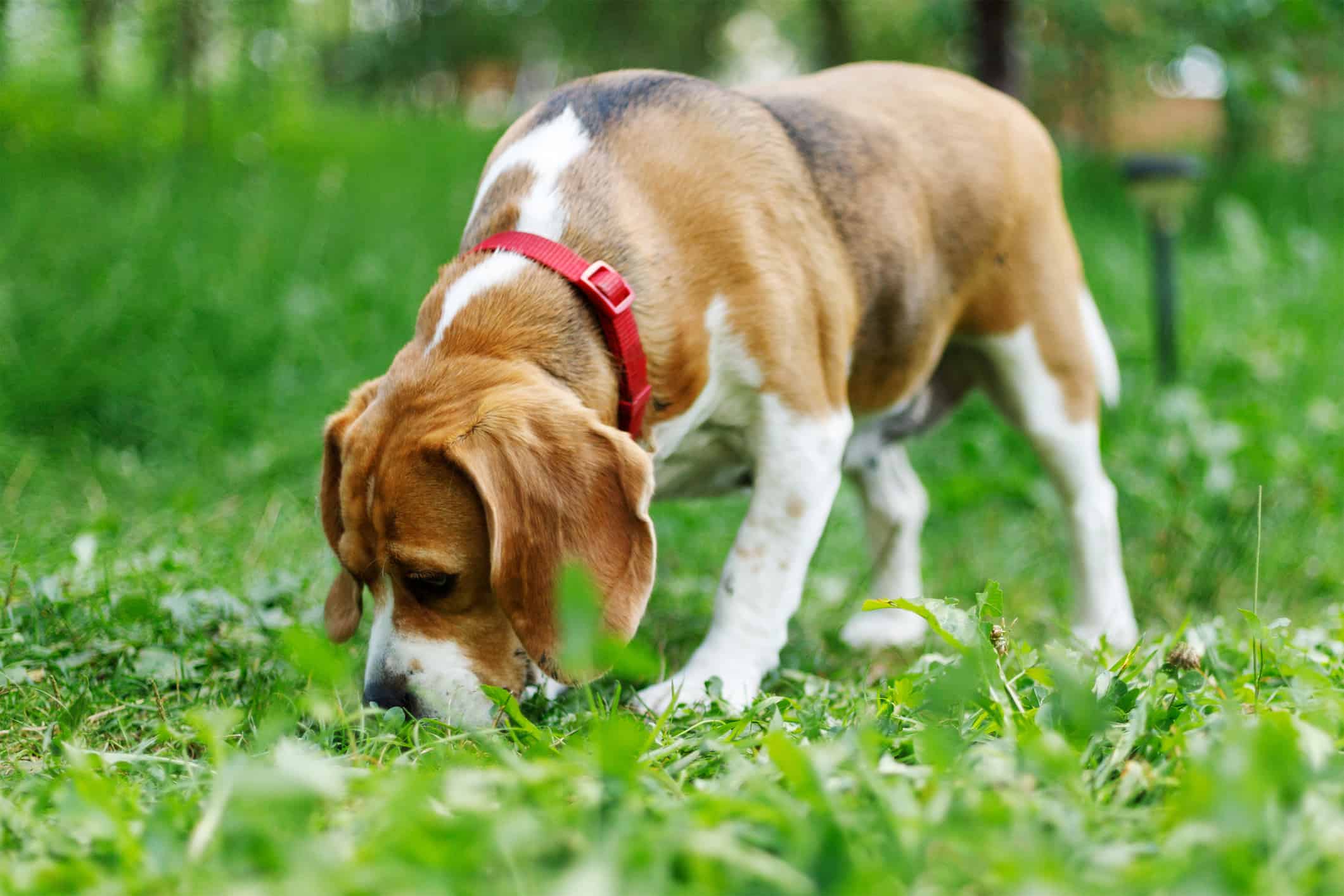
Most beagles are eager to please their owners, so training them can be a fun experience.
©Andrii Zastrozhnov/iStock via Getty Images
Beagles are another scent hound who are excellent search and hunting dogs. Many scent dogs like beagles have big, floppy ears to hold a scent close to their nose for reference while tracking prey. However, while bloodhounds are more robust, beagles have more energy and are much faster.
Beagles are exceptionally sweet and loving family dogs. They are incredibly popular with families, but they take time to adapt to situations and solve problems, opting to inform their owners of a situation instead of solving it themselves.
Beagles have excellent instinct intelligence and moderate obedience intelligence. They are capable of learning a variety of tricks and commands. However, they are slow to adapt and may take time to adjust to new situations.
Mastiffs
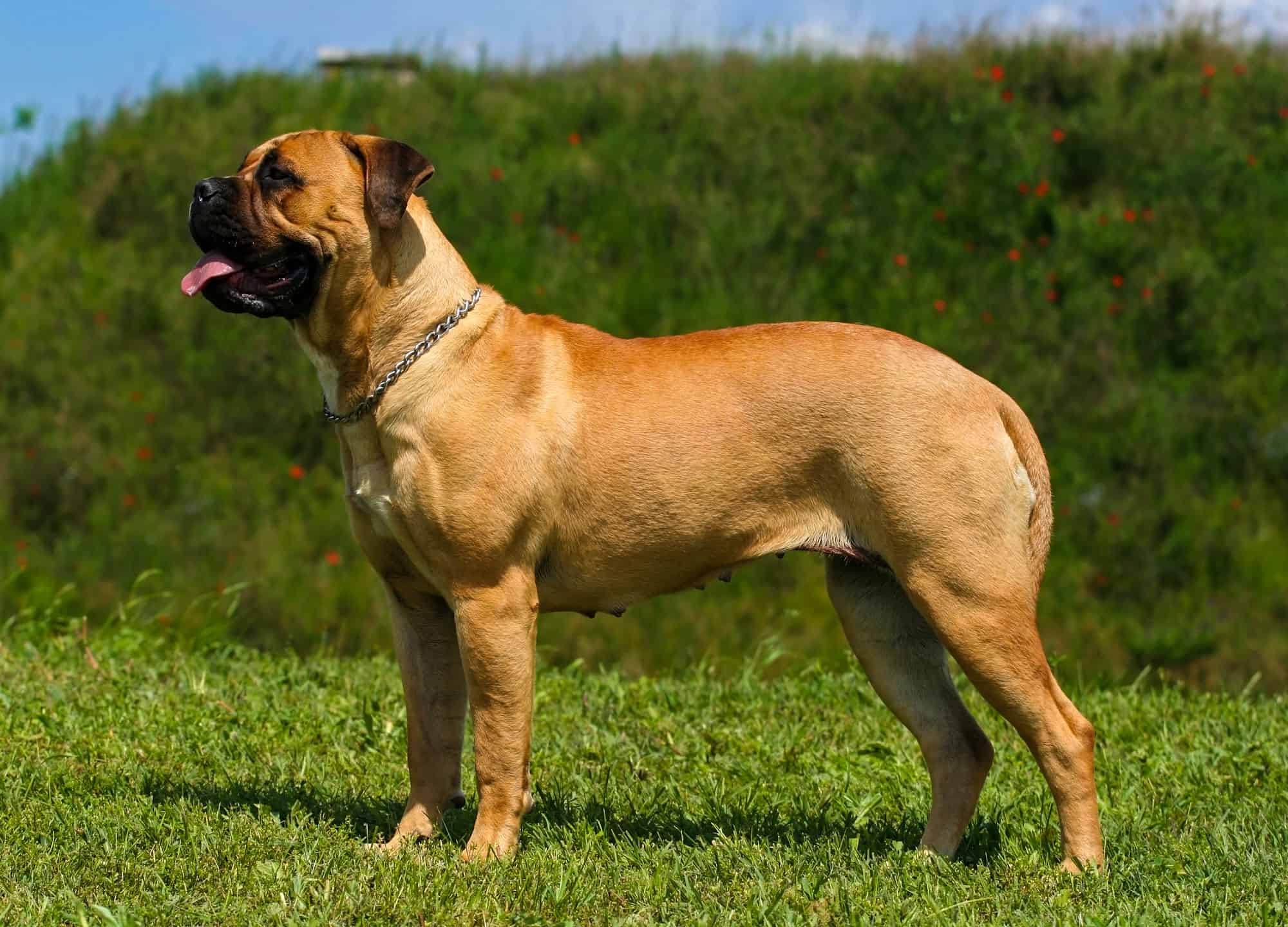
Most mastiffs have average intelligence, but their headstrong personalities lower their score.
©iStock.com/Wavetop
Mastiffs are a giant dog breed from England and Asia bred to guard homes and hunt. Their formidable size made them perfect guard dogs since they can easily scare off smaller prey and fight intruders.
Ironically, mastiffs are the epitome of gentle giants. They love nothing more than to lie around all day and spend time with their family. Mastiffs can be picky with whom they listen to when following orders and guarding. While they protect everyone, they only follow orders from someone who takes charge. Otherwise, they ignore commands and continue relaxing.
Mastiffs can be difficult to train without a strong voice and presence. They ignore most changes that do not explicitly involve them. These dogs have moderate instinctive intelligence, eager to guard friends and family.
Basset Hound

The adorable
basset hound
excels at jobs requiring tracking and scent work.
©Mindaugas Dulinskas/iStock via Getty Images
Basset hounds are another scent hound breed that suffers from the same issues as beagles and bloodhounds. These hounds are less energetic than beagles, have a calmer demeanor, and enjoy lounging around the house with their family.
They possess excellent instinct intelligence. However, this instinct commonly overrides their training to obey commands, placing them in the “least intelligent dogs” category.
Summary of the Least Intelligent Dogs
| Rank | Breed | Instinctive Intelligence | Obedience Intelligence | Adaptive Intelligence |
|---|---|---|---|---|
| 1. | Afghan Hound | Moderate | Low | Low |
| 2. | Basenji | High | Low | Low |
| 3. | Bulldog | Low | Moderate | Low |
| 4. | Chow Chow | Moderate | Low | Low |
| 5. | Borzoi | High | Moderate | Low |
| 6. | Bloodhound | High | Moderate | Low |
| 7. | Pekingese | Low | Moderate | Low |
| 8. | Beagle | High | Moderate | Low |
| 9. | Mastiff | Moderate | Moderate | Low |
| 10. | Bassett Hound | High | Moderate | Low |
The photo featured at the top of this post is © Kristina Holovach/Shutterstock.com
Ready to discover the top 10 cutest dog breeds in the entire world?
How about the fastest dogs, the largest dogs and those that are -- quite frankly -- just the kindest dogs on the planet? Each day, AZ Animals sends out lists just like this to our thousands of email subscribers. And the best part? It's FREE. Join today by entering your email below.
Thank you for reading! Have some feedback for us? Contact the AZ Animals editorial team.






